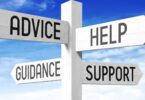Stress can be positive, who knew? This month I interviewed two of our AWAL contributors Dr. Joseph Steyr and Michelle Heighington about their “stress well” program in the legal blog Slaw.ca. Here is the transcript of that conversation.
Lives filled with joy, meaning, and challenge come with stress. The good news? Research has shown that the idea that ‘all stress is bad’ turns out to be wrong. In fact, our bodies are equipped with an adaptive stress response that helps us master the challenges we face as we pursue lives of purpose.
Stressing well is actually essential for supporting our health and vitality. To learn more about this, I had a conversation with the founders of Greystones Health in Toronto, Dr. Joseph Steyr N.D and nutritionist Michelle Heighington. Together they offer an on-line course for lawyers called “Stress Well, Rest Well”TM.
Wolf: What is the difference between good and bad stress?
Dr. Steyr: When I talk about stress with my patients I distinguish between two different types. One is psychological. This form of stress comes from intense effort, whether from a physical activity like running a marathon, or the mental effort of working on a complex legal document, or presenting in court. Professionals experience this kind of stress every day. It comes from being hyper focused and intense.
This is not to be confused with the second kind of stress – anxiety. Anxiety is fear and worry driven. You could be making no effort. You can be home on the sofa watching television and experiencing anxiety.
Historically we talked about stress as a nervous system state. The fight or flight stress response or its inverse – rest and digest.
It turns out stress is far more complex, with many different hormones working at different times in different ratios.
Wolf: What does that mean for the lawyer?
Dr. Steyr: Increased awareness about stress is good. You can use stress to your advantage to perform well and to prevent yourself from reaching burn out.
Heighington: In her Positive Stress book, Kelly McGonigal writes about the positive sides of stress but not how to recover. To stress well you need to balance periods of intense effort with recuperation. Without the recuperation piece, the performance benefits of stress rapidly decrease. The interplay is important – use stress well and recover really well.
Wolf: What does it mean to use stress well?
Heighington: We think about stressing well as working in steps. The first step is awareness. Noticing when you are in a good stress mode, and when this is helping and not hurting.
Dr. Steyr: Is this a situation where stress will help or hurt? If you are appearing in court it will help. If you are in the middle of a complex transaction it will help. You need stress when you are called to perform at your best. If you are on the computer responding to emails – that is not a time for stress. Away from those situations you need to recover.
Heighington: Step two is making a conscious choice. I am choosing to be pumped up and ready to go. This helps stimulate the body to produce the hormones needed for performance.
Step three is to replace any lingering fear with a focus on challenge. Fearful thoughts such as “what if this argument is weak?” or “what if I mess this up?” move us into a flight/fight response. When we can shift our focus to addressing the challenge such as “this argument is pushing the envelope but let’s see how the judge responds” and “I am going to give this my best and see it through”, we shift the stress into the challenge zone which gets our body and mind working at its sharpest.
Wolf: You can change your stress in the moment from negative stress to positive?
Dr. Steyr: Yes, if you catch yourself thinking “oh no I am stressed”, think again, “oh yea I am stressed.”
Heighington: We need challenge stress instead of fight and flight stress. Fight and flight stress is a response to fear. Remove the fear to make it a challenge response. Fight and flight responses send blood to the back of brain for balance and coordination, not for complex thinking. Challenge stress sends blood to the brain’s executive centre. “I don’t need to be afraid, I need to be thinking.”
Dr. Steyr: The aim of stressing well is to use self-trust and self-talk to turn fear to excitement, not to try to be calm at all times. It helps to learn to recognise the signs of when you are under stress. These are different for everybody. Some experience shortness of breath, others fidget, or engage in stress eating.
Wolf: I’ve learned to notice when I feel tension in my shoulders and in my solar plexus. That’s a sure sign of stress setting in.
Dr. Steyr: That’s right. And when you are aware of the stress it is time to decide, “Now what do I want to do with it?”
Wolf: What can a lawyer can do to use stress well?
Heighington: Recuperate. Lawyers are really busy – and it’s easy to think there isn’t enough time for recuperation.
Here’s what is important to know. You don’t have to take a day off. You don’t have to be in bed by nine o’clock. Even just a 20-minute break during the day will help to give you a break from the stress mode.
Dr. Steyr: I would urge lawyers to find their own rejuvenation strategies.
When it comes to exercise we have all heard the tips about taking the stairs instead of the escalator or parking the car farther away.
The same sorts of strategies work with rejuvenation. Take five minutes for a cup of tea. Do little things throughout the day, and embed these as part of your lifestyle. These little minutes throughout the day are the “one percenters” that can add up to a significant difference.
It doesn’t need to be the week-long yoga retreat. You can only do that once in a while.
Heighington: I think about stressing well with a cell phone analogy. After you use your phone for a while you have to recharge the batteries.
Dr. Steyr: I think about it like income and expenditure – when you make a big purchase you need time to allow income to build back up.
We monitor our money and our cell phones but not our energy levels.
We aren’t a bottomless pit of energy.
Wolf: What are some of the favourite mini break things people do?
Heighington: Take 20 minutes for a quiet lunch.
Dr. Steyr: Schedule a pause in the morning and another in the afternoon. Working straight through, nine to noon, is not sustainable and will give you diminished performance. Try taking a short break to get up for a water or tea. Take a deep breath. Check in with your body and loosen any tension.
Heighington: If all you can do is pause for a minute then do it. Or take twenty minutes when you need to. You will get this time back through getting more done after the break. Try setting an alarm if you need that reminder.
Dr. Steyr: Some people go for a short walk. Take the internal stairs to get a break and exercise.
Heighington: I also try and laugh. One belly laugh is worth a twenty-minute break. Watch funny videos on YouTube or listen to a humorous podcast.
Laughter is really a good form of medicine. I listen to ten minute clips of some comedians I like. It really makes time go by faster and happier.
Dr. Steyr: Watch YouTube of babies laughing – try to be stressed after that. It’s an amazing switch.
The Greystones Health team have developed an accredited course for lawyers to teach important strategies from their Stress Well, Rest Well™ Plan. The Stress Well portion of the course provides lawyers with strategies for handling stressful situations that are within your control, and ones that are out of your hands. The Rest Well portion of this course provides important tips to help you rebound after a stressful event to avoid burnout. The course is accredited in Ontario, and may be eligible for CPD credit in other Provinces and Territories in Canada.
Life can be stressful – learn how to use stress to your advantage.







